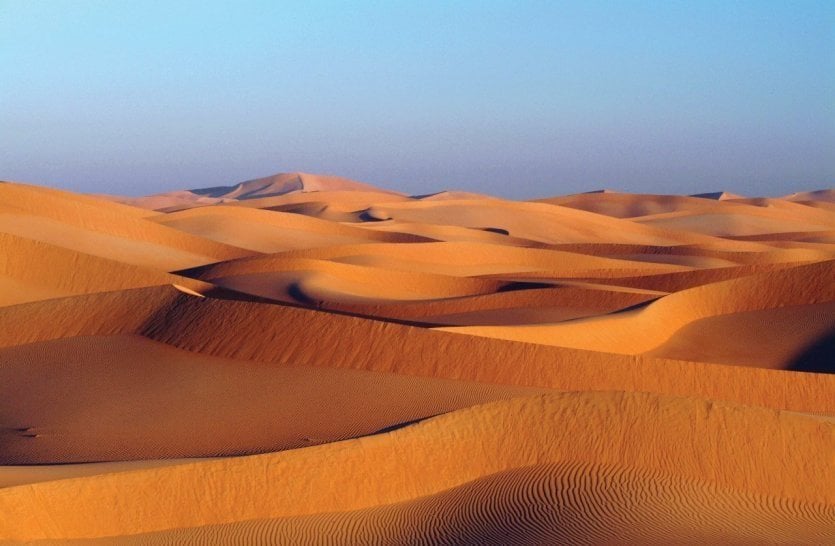
Singled out by Le Monde as a top destination in 2017, the Sultanate of Oman, this "tiny country" nestled between giants such as Qatar, Saudi Arabia and Iran, is a revelation. Long underestimated, Oman' s unspoilt nature and carefully preserved heritage make it a rare gem on the Arabian Peninsula. Between vast deserts, imposing mountains and immaculate shores, Oman is an invitation to escape. Le Petit Futé advises you not to miss out on its 17 must-sees, promising varied and colorful discoveries. Let yourself be surprised by the richness of Oman, a country where every landscape and every souk smells of adventure.
1- Discover Nizwa, poets' stronghold
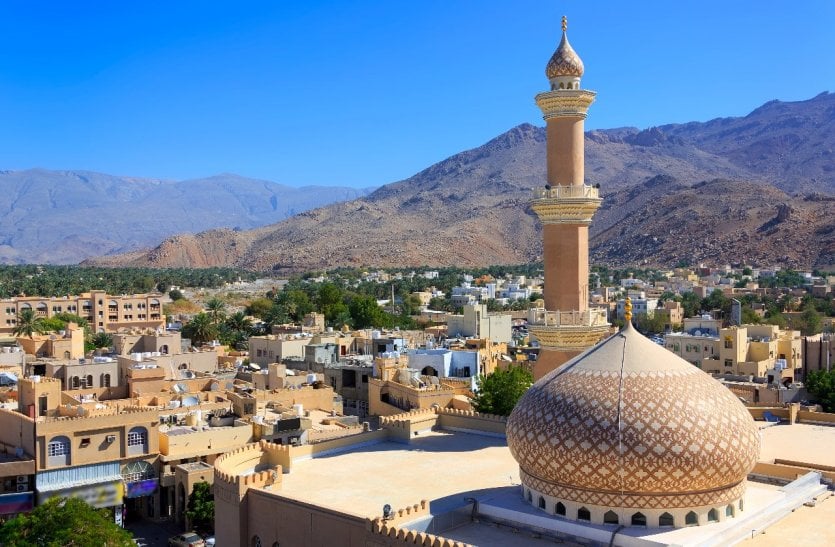
Once the country's capital, Nizwa holds a special place in the hearts of Omanis, as it was the domain of national writers and intellectuals. It was the first city in the sultanate to convert to Islam, and boasts two of the world's oldest mosques, Shawadinah and Sa'al, built in 623 and 629 respectively. Nizwa is also home to one of the country's most beautiful citadels, and its fortified souk, where fish and jewelry of all kinds are sold by auction, is certainly the most picturesque place in town! Book your audio guided day tour of Nizwa !
2- Trek up Jebel al Akhdar, the green mountain
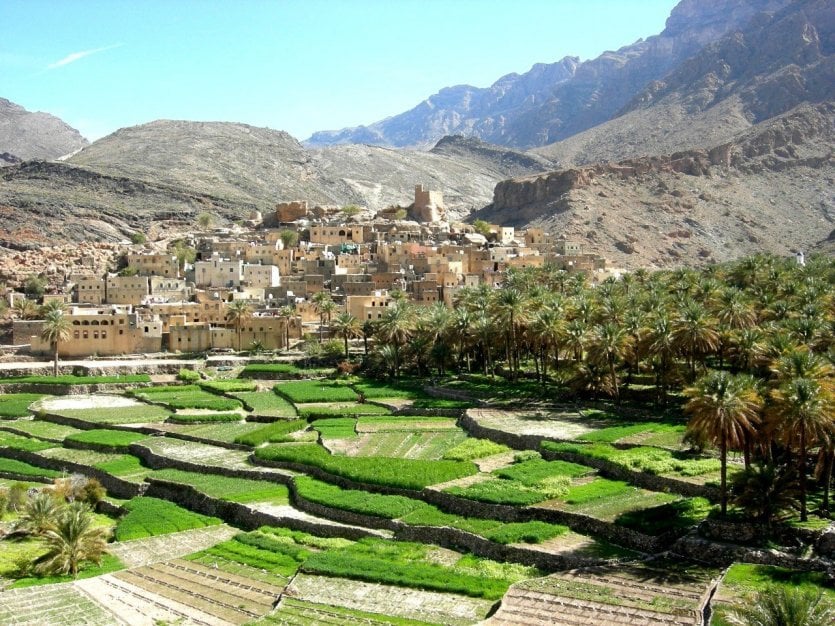
Jebel al Akhdar is part of the Al Hajar mountain range. Here, it hardly ever rains, yet as you climb the mountain, terraced crops follow one another and roses bloom. This little miracle is due to an ingenious irrigation system listed as a UNESCO World Heritage Site. Known as the "falaj", this ancestral network of gullies brings water from springs to arid areas. A trek in spring, when the roses are in bloom, is an unforgettable experience.
3- Salalah, on the incense route
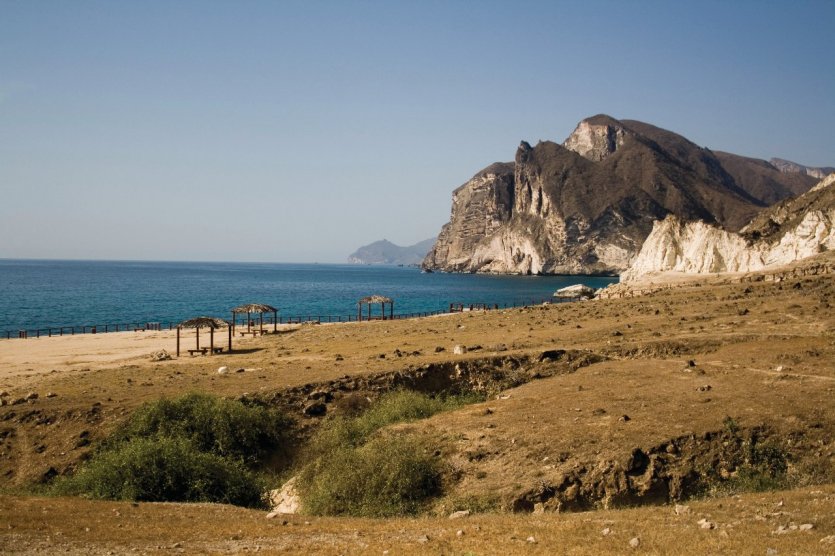
Salalah is the capital of Dhofar, close to the Yemen border. As far back as the 13th century, incense was traded here, as testified by the writings of Marco Polo. The incense trail is now a UNESCO World Heritage Site. In the area around Salalah, you'll discover sites recalling this long history, such as the Wadi Dawkah and its trees that produce the precious resin. salalah is the only place in Arabia to be hit by the Indian summer monsoon. Choose your travel dates carefully! Make your stay unforgettable with a luxury luxury desert safari with overnight stay in Salalah !
4- Muscat, an authentic capital city
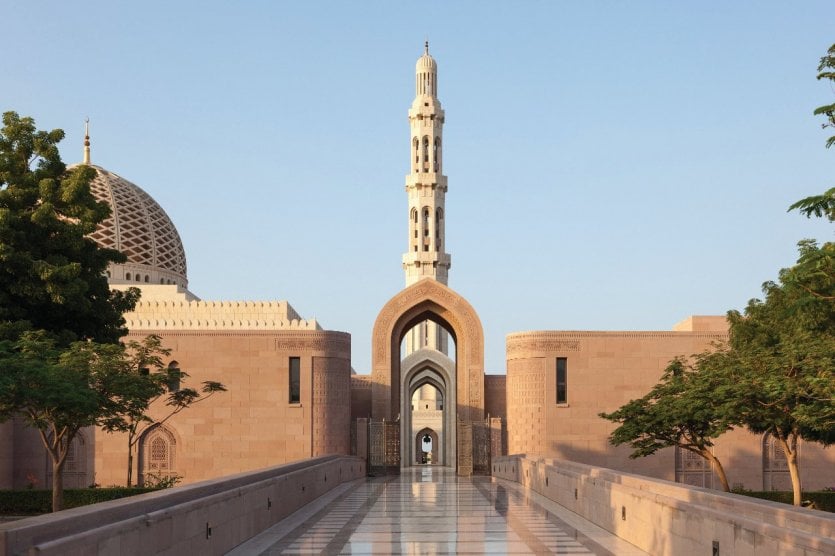
Divided into three distinct districts: Muscat, Mutrah and Ruwi, the capital of the Sultanate of Oman is very different from its Gulf neighbors. There are no flamboyant buildings here, just green spaces and preserved authenticity. The Sultan's reception palace, with its large balconies and immaculate facades, is a superb building, as is the great mosque of Sultan Qaboos. The Mutra district is worth a visit for its fish market, souk and hilltop fort. Open to the sea, between tradition and modernity, Muscat is a capital where life is good. Don't miss out on Muscat with a guided guided tour of the sights !
5- Wadi Ghul, Oman's grand canyon
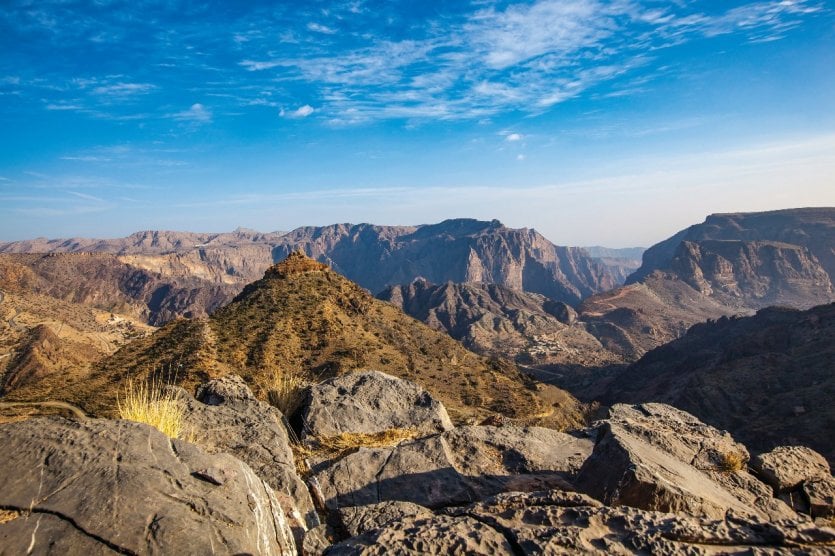
At an altitude of 3,000 m, Jebel Shams is the highest point in the Sultanate of Oman. This mountain opens onto the Wadi Ghul, a canyon over 1,000 m deep that has nothing to envy its Arizonian counterpart. A short hike through the wall of this natural monster will take you to isolated, picturesque villages. Numerous camping possibilities are available, before you begin your ascent of Shams. An unforgettable stage!
6- Bathing in the emerald waters of Wadi Bani Khalid
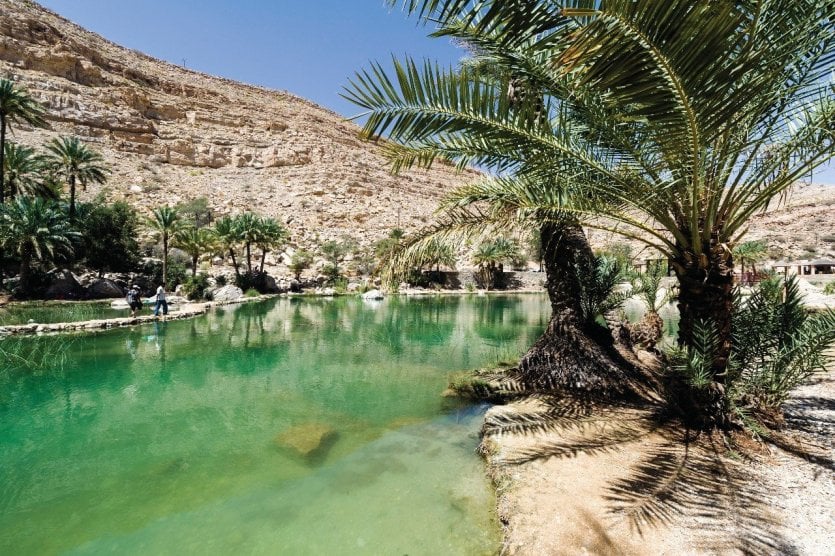
Located in the Hajar massif, Wadi Bani Khalid is an idyllic spot... Set in a narrow valley 600 m above sea level, this natural basin contains warm turquoise water all year round. The surrounding mountainous desert landscape is equally splendid. What more could you ask for?
7- Cruise the Musandam peninsula and its fjords
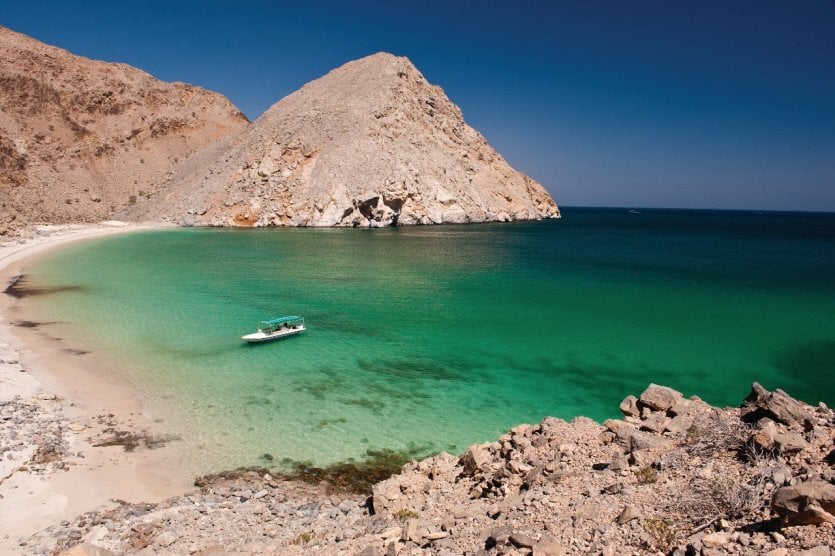
Nicknamed the Norway of Oman, Musandam offers an unexpected landscape. This peninsula, separated from the rest of the sultanate by the eastern coast of the Emirates, is home to sumptuous Arabian fjords on its southern coast. They are home to an exceptional fauna including manta rays, reef sharks and even dolphins! You can admire all this wildlife on a cruise in a dhow, a typical Omani sailing boat. A region with a unique charm. Book a dhow cruise dhow cruise with dolphin watching ! The Sultanate of Oman is also one of the top 10 places in the world to swim with whale sharks!
8- Bimmah Sink hole, a fairytale abyss
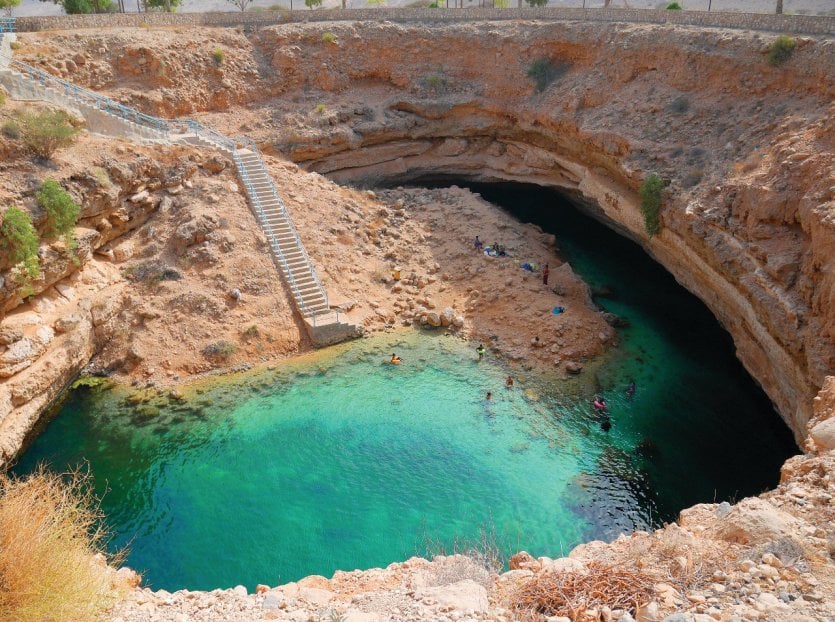
The Bimmah Sink Hole is much more poetic than the name suggests. Located in Najm Park Hawijat, northern Oman, it's what's known as a "sinkhole": a sort ofoasis in a limestone desert. A veritable natural swimming pool, it is accessed via a small staircase running along the walls. Once in the water, you'll be surrounded by flourishing vegetation and friendly little fish... A paradise! Make the most of your stay with a full-day excursion to Wadi Shab with the Bimmah chasm !
9- Admire the turtles on Ras al Jinz beach

On the shores of the Indian Ocean, on the edge of the Arabian Sea, Ras al Jinz beach is one of the wonders of the Sultanate of Oman. As well as being a splendid spot, surrounded by cliffs, it is one of the main nesting sites for sea turtles. More than 30,000 sea turtles nest here every year! In the early hours of the morning, the sight is unforgettable... For the turtles' well-being, access is limited to 60 visitors per day - in groups of 20. A fine example of ecological tourism!
10- Take a trip to the red desert of Wahiba
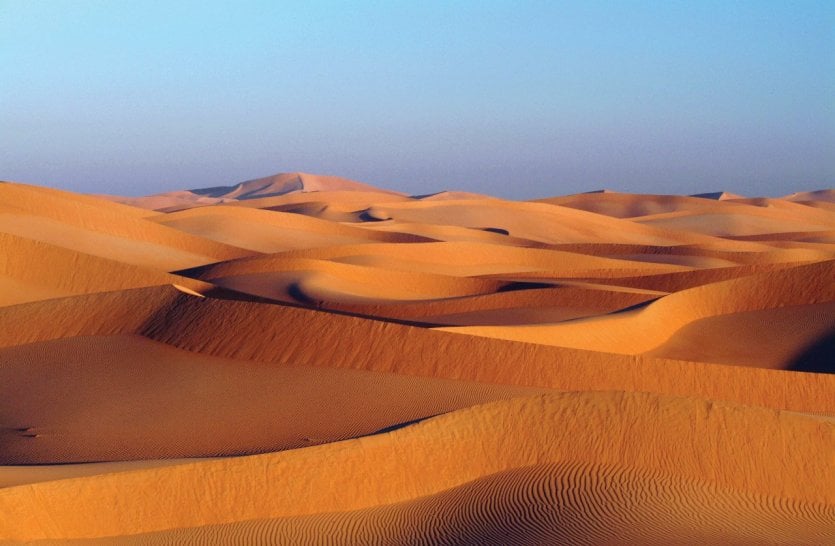
This is the must-do experience of a stay in Oman! Bordered by the Hajar Mountains and the Arabian Sea, these red sand dunes are of incredible beauty. Shaped by the winds, they are in perpetual motion... So it's impossible to find your way around without the help of a guide! At the same time, your guide will show you how local people live in this arid environment. Here, the desert has remained untouched, far from the modernization and business of other Gulf countries: it's one of the most precious jewels of the Sultanate of Oman.
11- Visit the Al Hoota Caves
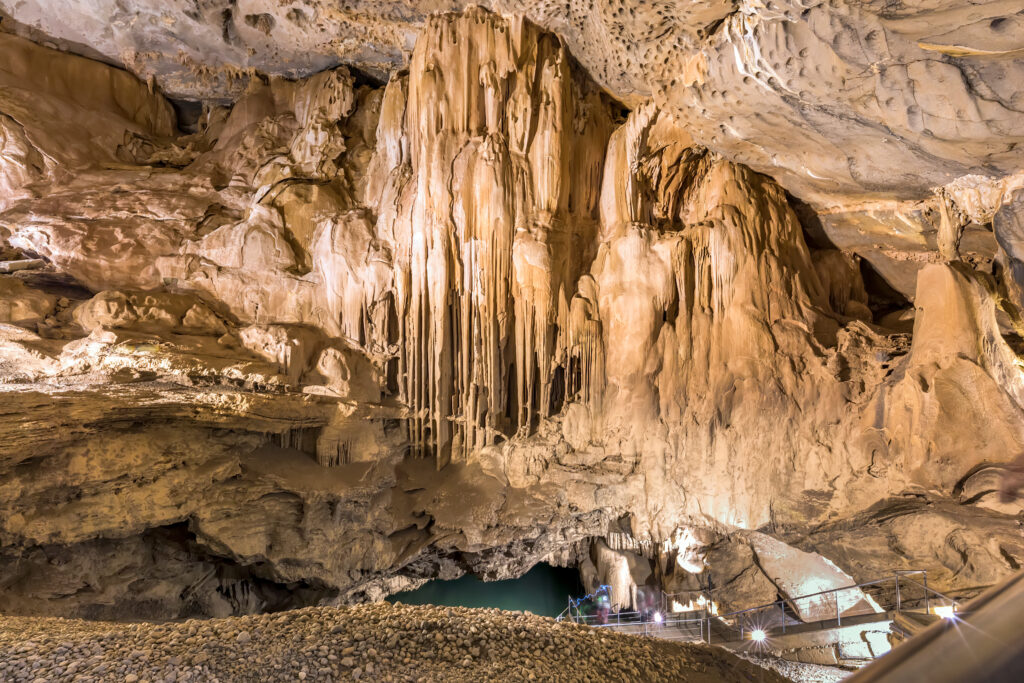
TheAl Hoota caves, located at the foot of Mount Jebel Shams in Oman, are a fascinating underground world to explore. They form a labyrinth of stalactites and stalagmites formed over thousands of years, creating today a dazzling natural spectacle. To visit them, you'll need to board a small train that will take you to the cave entrance. Inside, a specially-designed trail guides you through the chambers and underground lakes populated by blind fish, unique to this ecosystem. It's an experience not to be missed by those curious about nature and families looking for a gentle, relaxing adventure.
12- Enjoy the Fazayat Beaches
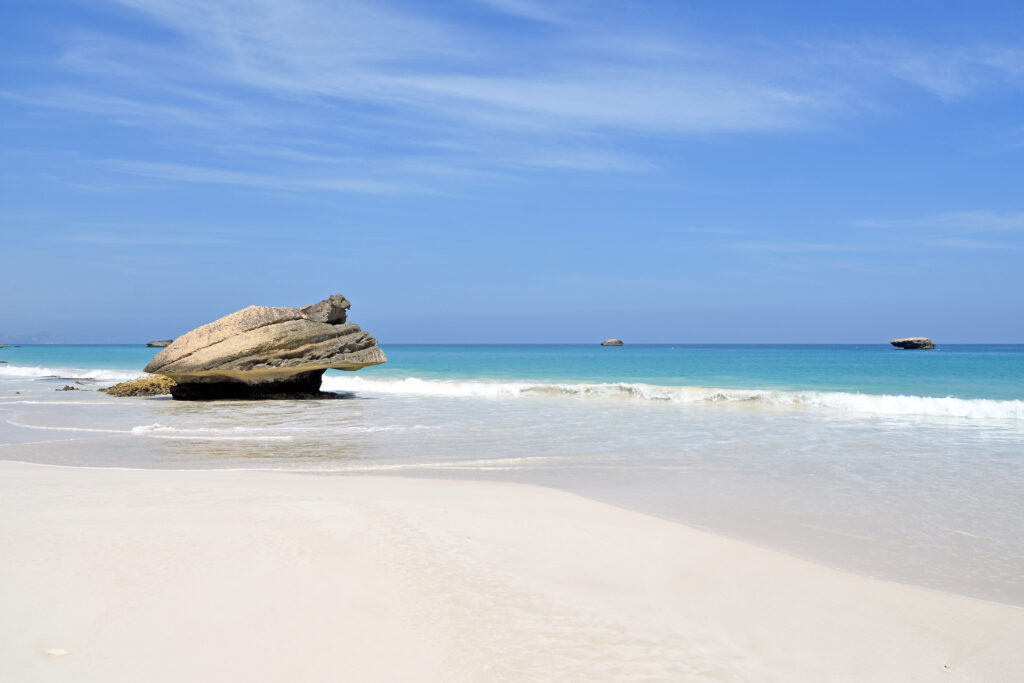
Fazayat beach, less than two hours from Salalah, plunges you into an unspoilt natural setting facing the Arabian Sea. With no traditional tourist facilities, it promises an authentic, untamed experience. Visitors are encouraged to come prepared, bringing everything they might need, and above all to leave nothing behind but footprints in the sand. Access by 4x4 is recommended, adding an adventurous touch to the visit. It's a little corner of paradise for lovers of unspoilt beaches and endless horizons.
13- Discover the Daymaniyat Islands
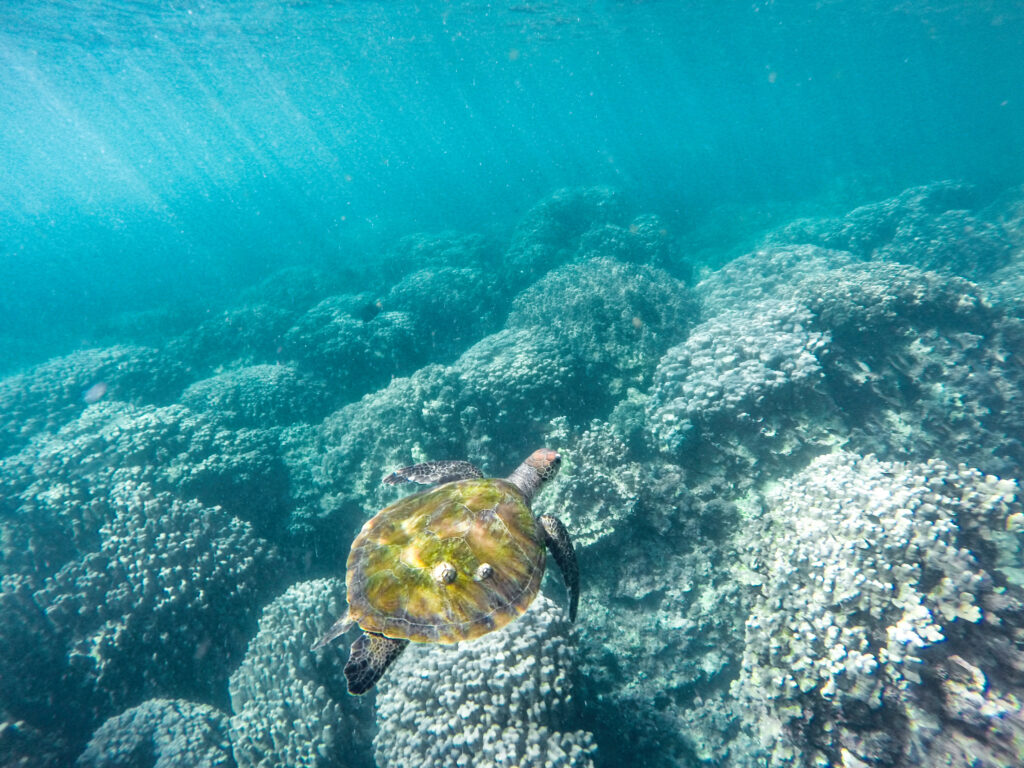
Located off the coast of Oman, these islands form a protected archipelago, renowned for its crystal-clear waters and abundant marine life. The adventure begins with a short boat trip, promising an escape from everyday life. Once there, the underwater world opens up: colorful coral reefs, thousands of tropical fish and, with a little luck, turtles and dolphins. The islands are also a prime snorkeling spot, allowing everyone to enjoy the underwater beauty without heavy equipment. It's an ideal getaway to disconnect, explore and marvel at the richness of nature. Opt for a snorkeling trip to the Dimaniat Islands !
14- Bahla Fort
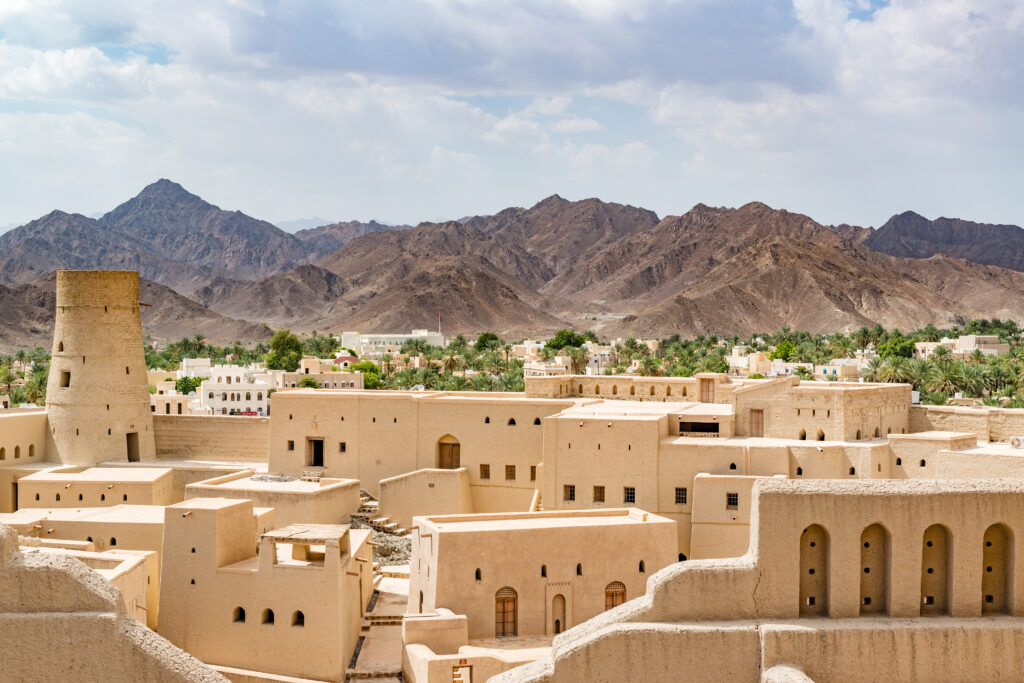
Bahla Fort, a UNESCO World Heritage Site, is a must-see for anyone wishing to explore Oman's rich heritage. This gigantic terracotta edifice bears witness to the defensive ingenuity of past centuries. Surrounded by an imposing wall, the fort is a veritable journey back in time, where you can easily imagine the life of its former inhabitants. Its meticulous restoration today allows visitors to wander through its courtyards, towers and along its ramparts, offering breathtaking views of the surrounding Bahla oasis. This historic site also tells the story of the local tribes and their mastery of irrigation, essential in this desert region. To visit Bahla Fort is to discover a fascinating chapter in Omani history, where architecture and nature meet.
15- The ancient city of Qalhât
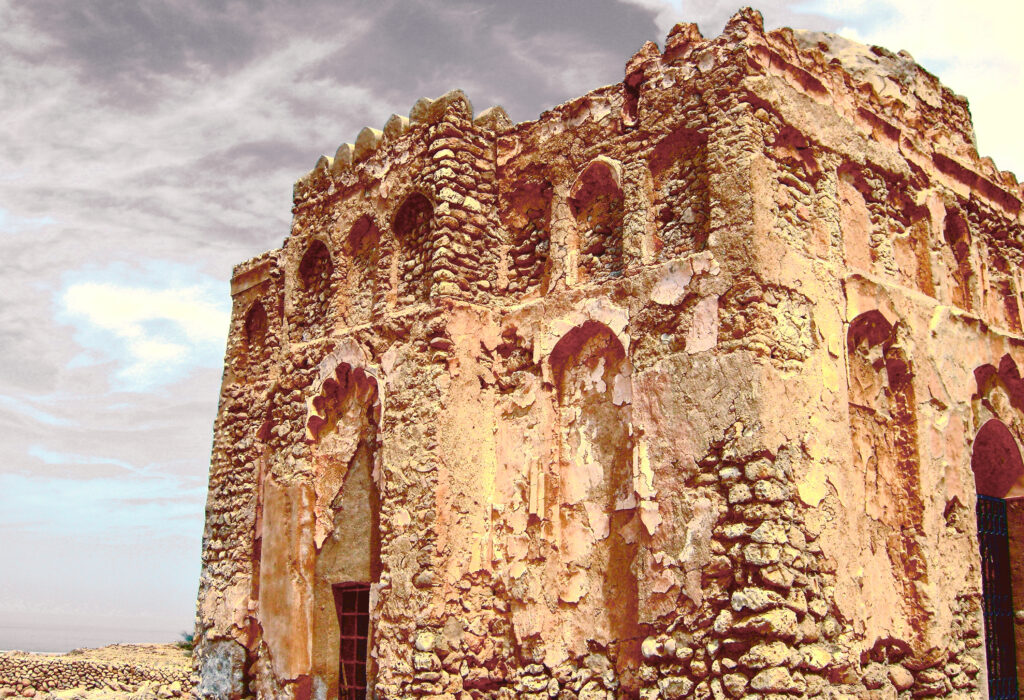
The ancient city of Qalhât, located on the coast of Oman, isa window on the country's glorious past. The city was once a thriving commercial crossroads, linking East and West. Today, what remains of Qalhat arouses curiosity and imagination. Wandering among the ruins, you can almost hear the echoes of the merchants and travelers who once roamed its streets. The site is best known for the mausoleum of Bibi Maryam, a monument which, despite the centuries, still bears witness to the wealth and importance of Qalhât. It's an experience not to be missed if you want to understand the deep roots of this captivating region.
16- Seeb Beach
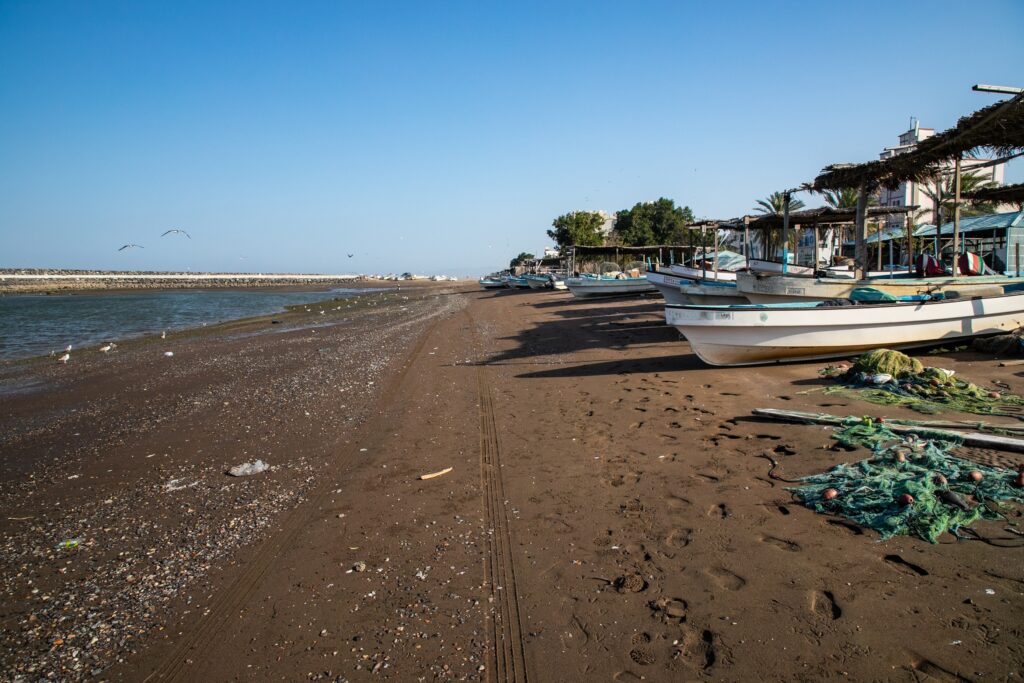
Seeb Beach, near Muscat, is the perfect place to relax by the water. This beach stretches along the coast, offering a vast area of fine sand for games, sunset strolls, or simply lying back and listening to the sound of the waves. It's a place where families and friends gather to enjoy the sea air. As well as swimming, you can enjoy a variety of water sports or explore the small restaurants and cafés that line the promenade. Seeb Beach is also a great place to watch planes take off and land, thanks to its proximity to the airport. Easy to get to, it's an ideal getaway for those who want to escape the hustle and bustle of the city without going too far.
17- Wadi Shab
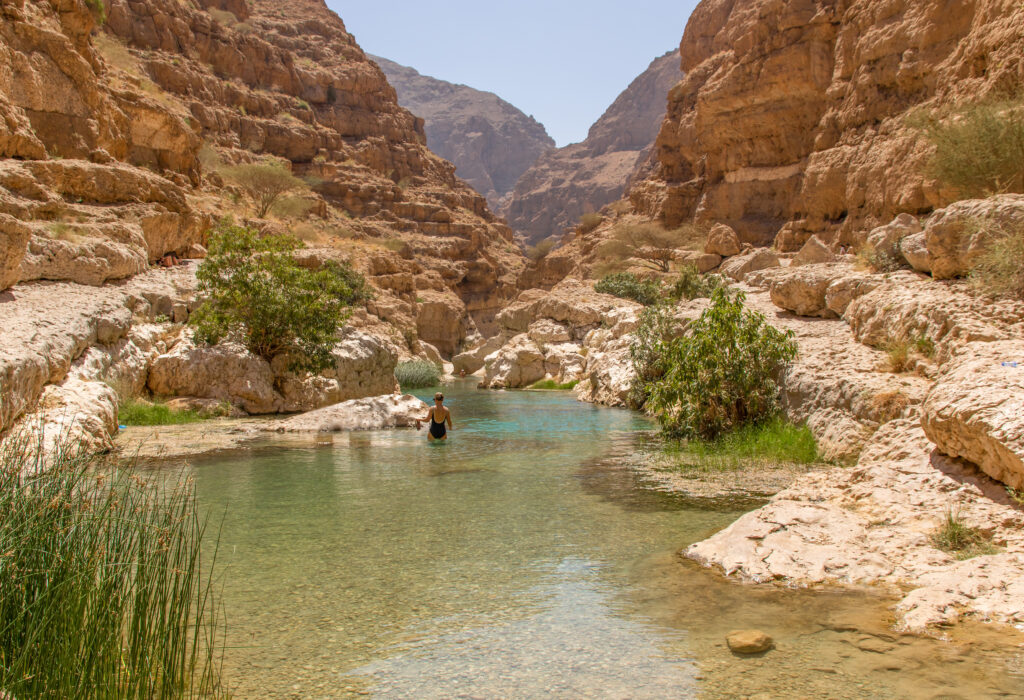
Wadi Shab is a magnificent canyon, with crystal-clear waters winding through cliffs and rocks. The hike to get there is part of the experience, offering spectacular views and the promise of a refreshing swim. Once inside, you'll discover bright blue natural pools where you can swim and even dive from the rocks. The highlight is a hidden grotto, accessible after a short swim, where an indoor waterfall creates a dreamy backdrop. Wadi Shab is the perfect escape into the wild beauty of Oman, far off the beaten track. It's an unforgettable experience, combining exploration, swimming and natural wonder.
What's the best month to visit Oman?
The best time to visit Oman is from August to May, offering a wide window of opportunity to discover the country's wonders. However, to avoid the highest temperatures and enjoy a milder climate, it is advisable to visit Oman between November and April. During this period, temperatures hover around 30°C in both the north and south of the country, making the discovery of Oman's landscapes both pleasant and comfortable.
Which is the most beautiful city in Oman?
Among the cities most prized for their beauty and cultural richness, Muscat, the capital, is often cited. Muscat stands out for its harmonious blend of modernity and tradition, nestled between impressive mountains and the Gulf of Oman. The city is home to iconic landmarks such as the Great Mosque of Sultan Qaboos, the Al Alam Palace surrounded by historic forts, and the bustling Muttrah district with its famous souk.
What language is spoken in Oman?
The official language spoken in Oman is Arabic. It is the language used in government, education and the media. However, due to Oman's international presence and tourism, English is also widely understood and spoken, particularly in commerce, industry and among professionals. In addition, as Oman is a multicultural country, other languages such as Urdu, Baluchi, Hindi and Swahili can also be heard, reflecting the diversity of its population.
What to wear in Oman
In Oman, the dishdasha is much more than just a piece of clothing; it is the traditional and official garment that symbolizes the country's identity and customs. This long tunic envelops the body of both men and women, stretching from neck to toe, and embodies a form of respect and elegance within Omani society. For visitors, adopting appropriate attire in line with this tradition is a mark of consideration for the local culture and its inhabitants. It is therefore advisable, during your stay, to favor clothing that respects this standard of modesty, not only to honor Omani traditions, but also to integrate harmoniously into the country's social framework.
If you're tempted by a vacation in Oman, book your travel insurance here at a discounted rate and leave with peace of mind!


